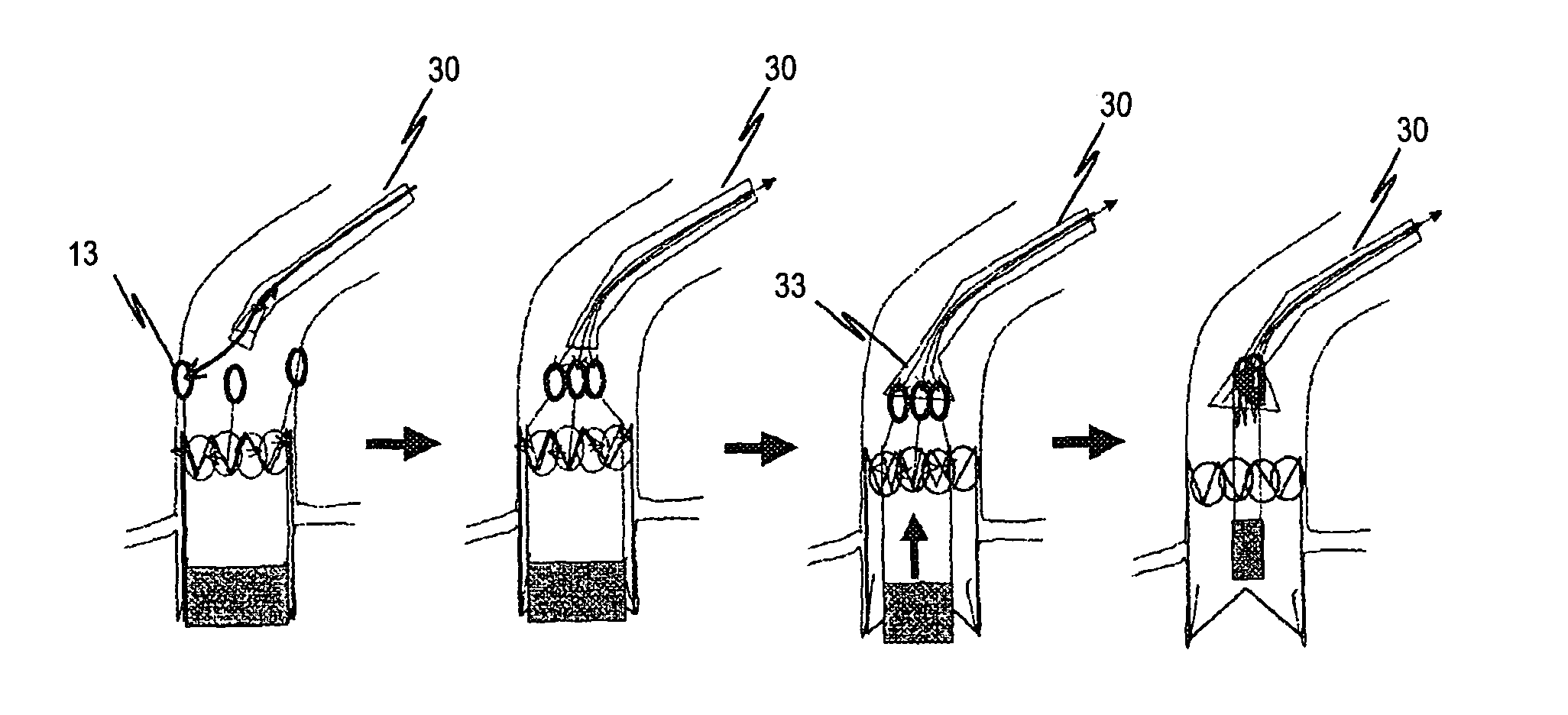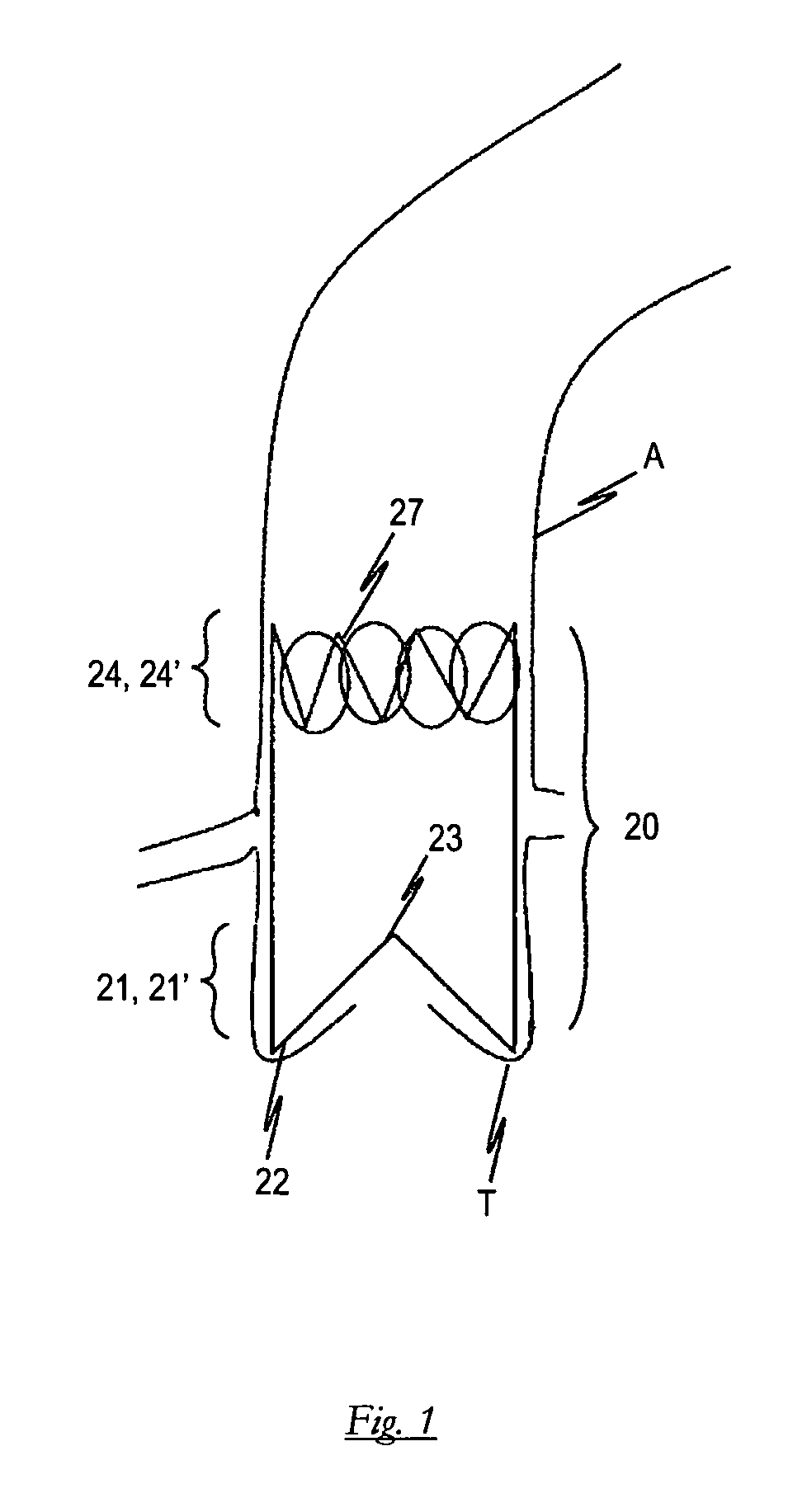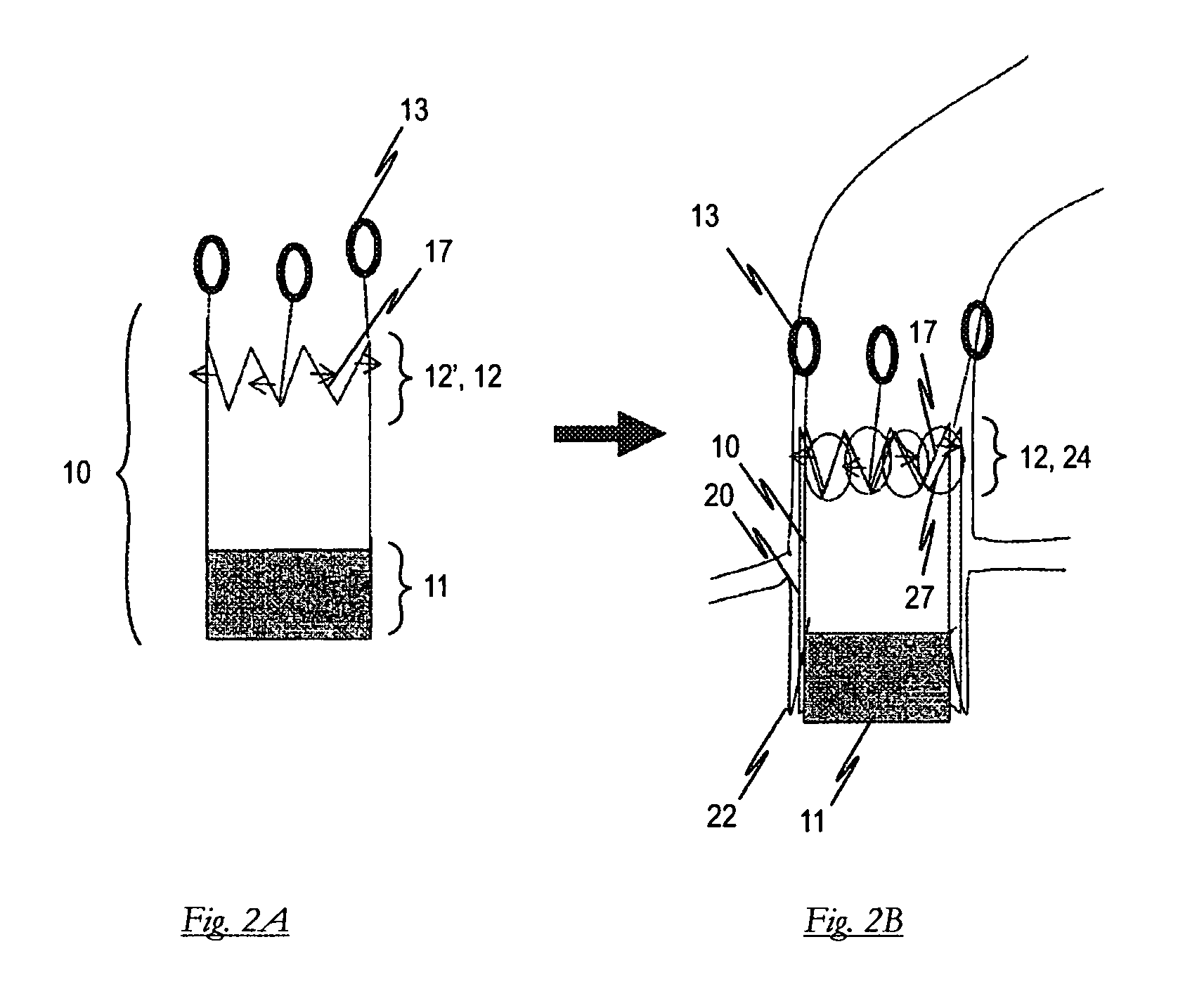Device for the implantation and fixation of prosthetic valves
a technology for prosthetic heart valves and devices, applied in the field of devices for transvascular implantation and fixation of prosthetic heart valves, can solve the problems of risky surgical procedure, inability to perform procedures on patients whose hearts are already too weak, and risk of heart valve implant malalignmen
- Summary
- Abstract
- Description
- Claims
- Application Information
AI Technical Summary
Benefits of technology
Problems solved by technology
Method used
Image
Examples
Embodiment Construction
[0050]FIG. 1 shows a preferred embodiment of a positioning stent 20 for the device according to the invention in the inserted state. The positioning stent 20 is in its expanded state in the embodiment shown. As depicted, the positioning stent 20 has an anchoring segment 21′ with anchoring supports 21 at its proximal end. The anchoring supports 21 are hereby configured such that they optimize themselves into the pockets T of the old heart valve relative to axial rotation as well as horizontal position. To this end, the positioning stent 20 is supported by means of anchoring supports 21 in pockets T of the old heart valve. The anchoring supports 21 themselves are connected to docking segment 23 by means of shoulders 22. The docking segment 24′ of positioning stent 20, provided at its distal end, exhibits a plurality of engaging elements 24 which fix a heart valve stent to be implanted (not explicitly shown in FIG. 1).
[0051]The positioning stent 20 is configured as a self-expanding com...
PUM
 Login to View More
Login to View More Abstract
Description
Claims
Application Information
 Login to View More
Login to View More - R&D
- Intellectual Property
- Life Sciences
- Materials
- Tech Scout
- Unparalleled Data Quality
- Higher Quality Content
- 60% Fewer Hallucinations
Browse by: Latest US Patents, China's latest patents, Technical Efficacy Thesaurus, Application Domain, Technology Topic, Popular Technical Reports.
© 2025 PatSnap. All rights reserved.Legal|Privacy policy|Modern Slavery Act Transparency Statement|Sitemap|About US| Contact US: help@patsnap.com



